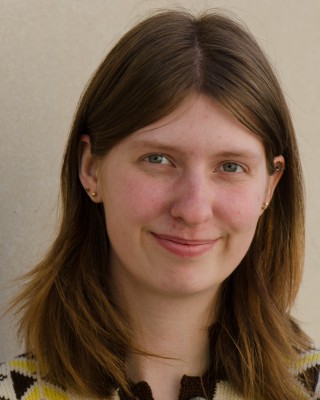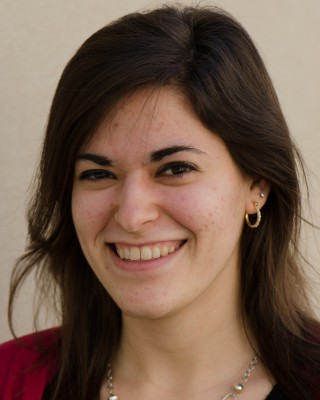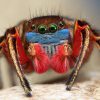Daniel was a postdoctoral researcher in the lab from 2014-2018, during which time he focused on the evolution of visual function and visual signaling in Habronattus jumping spiders. His work led to breakthroughs in our understanding of how these animals see color, process motion, and use retinal movements to perceive complex displays. He is now a Data Scientist at Apple.
Lab Alumni

Dr. Daniel Zurek

Dr. Sebastian Echeverri
Sebastian was a doctoral student in the lab from 2014-2020. His dissertation, titled “How spatial constraints on efficacy and dynamic signaling alignment shape animal communication”, focused on spatio-temporal dynamics in the evolution of male courtship displays in the jumping spider Habronattus pyrrithrix. He pioneered video playback, treadball, and tethered presentation paradigms in the lab, leading to new insights into how behavior of males and females combine to impact signaling outcomes during courtship and mate choice. Sebastian is now a professional science communicator, journalist, and nature photographer.

Dr. Melissa Plakke
Melissa was a doctoral student in the lab from 2013-2019. Her dissertation, titled “Post-mating, pre-zygotic interactions and their potential to drive speciation in the Cabbage White butterfly, Pieris rapae” focused on co-evolutionary dynamics between male ejaculates and female reproductive physiology in butterflies. Through collaborations between the Morehouse and Clark Labs that she fostered, Melissa developed a number of new techniques for studying butterfly reproductive proteins and reproductive physiology from genetic and genomic perspectives to biochemistry and even protease docking simulations, leading to completely new insights into the reproductive lives of butterflies. She is now an NIH IRACDA post-doctoral fellow at the University of Kansas, where she works with Dr. Jaime Walters. Melissa also teaches at the Haskell Indian Nations University.

Dr. Lisa Limeri
Lisa was a doctoral student in the lab from 2012-2017. Her dissertation, titled “The evolution of color polymorphisms in Colias butterflies: preferences, learning, and sensory limitations” tested a number of longstanding hypotheses about the evolution of color polymorphisms, from sensory biases to mate choice learning, all within a broadly comparative context. In the process, she used a wide range of techniques, from ancestral state reconstructions to manipulative behavioral studies, and from theoretical modeling to analyses of color perception. Lisa is now a discipline-based education research postdoctoral fellow at the University of Georgia, working with Erin Dolan.

Dr. Lisa Taylor
Lisa was a postdoctoral researcher in the lab from 2012-2013, and is single-handedly responsible for developing our addiction to all things jumping spider. While in the lab, Lisa led a series of clever studies that significantly deepened our understanding of how jumping spiders use color during foraging, including their capacity to discriminate prey based on color and their ability to associate color with toxicity and palatability. She now runs her own productive lab as faculty in the Entomology and Nematology Department at the University of Florida, Gainesville. Lisa remains an active collaborator of the lab, including being a co-PI on one of our current NSF grants investigating the evolution of color vision across jumping spiders.


